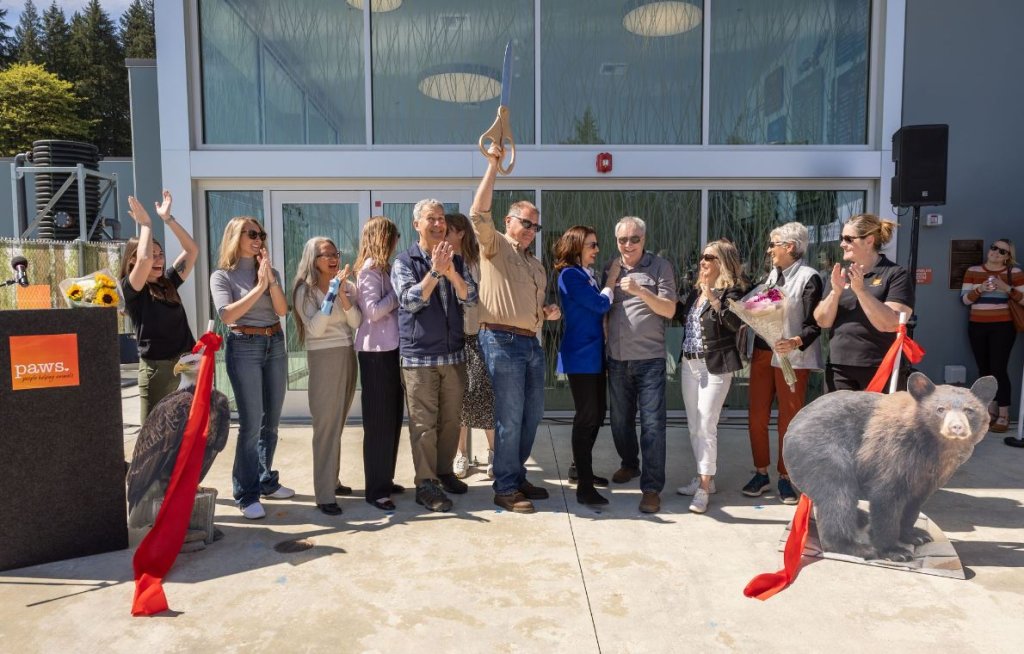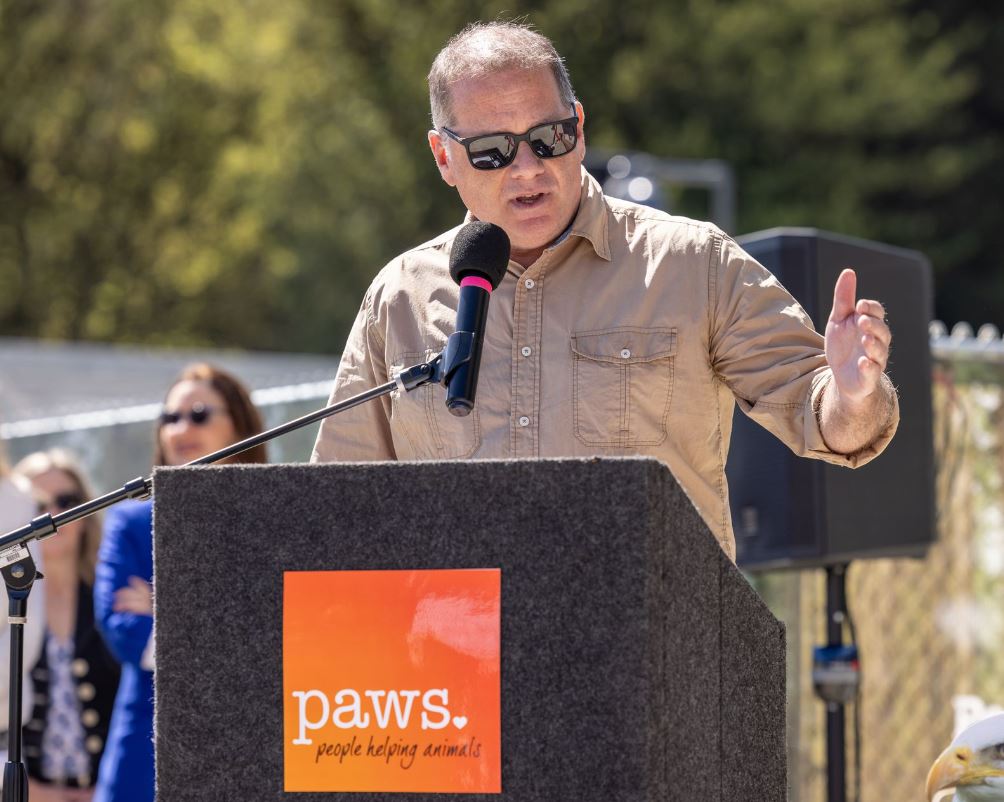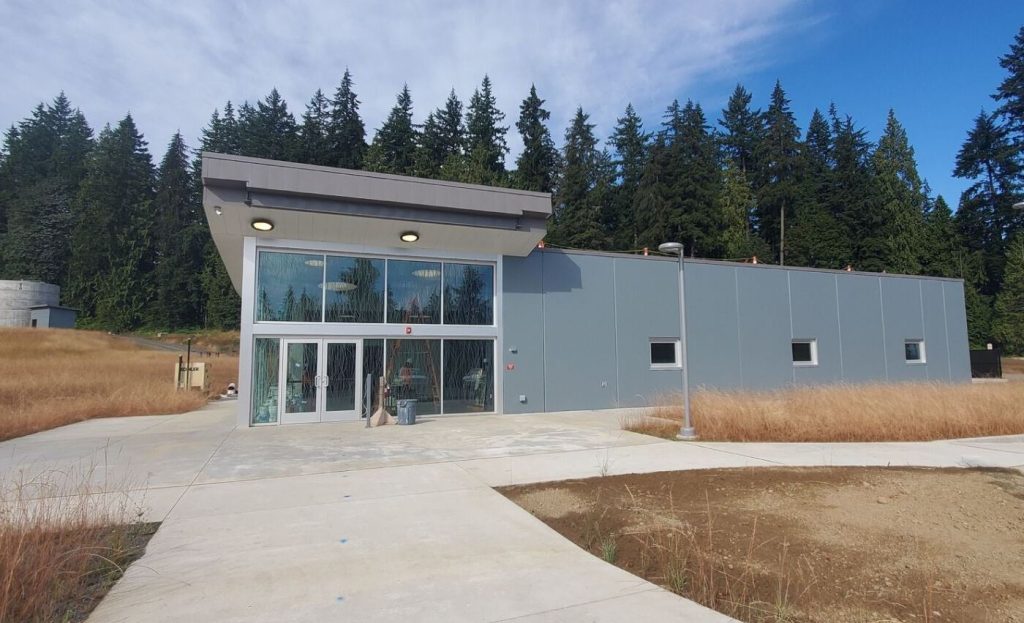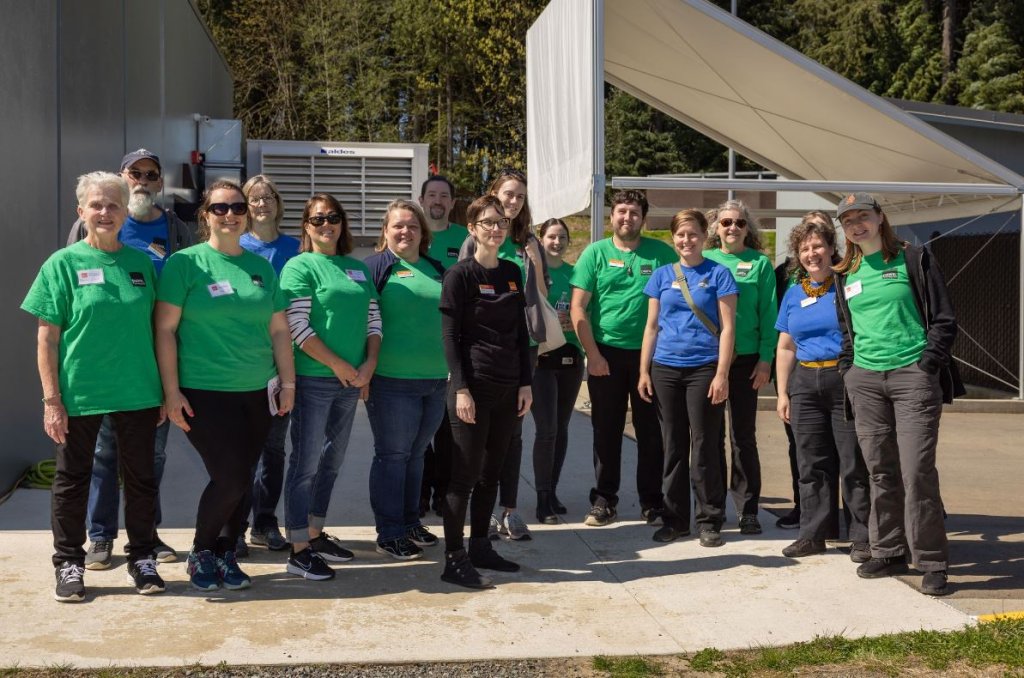SNOHOMISH—Lynnwood-based PAWS Wildlife Center held a ribbon cutting ceremony Saturday, April 20, for its brand-new, state-of-the-art rehabilitation facility in Snohomish which, when it opens on May 15, will be the largest wildlife center in Washington State.

Since 1981 PAWS Wildlife Center has rehabilitated over 140,000 different injured animals and reintroduced them back into the wild. But for the last 25 years rapid urbanization, an increase in nearby forest fires, and the center’s limited size has left the Lynnwood-based facility grossly unequipped to serve the region’s increasing need for wildlife care.
To address this issue, PAWS purchased three parcels of land stretching across 25-acres on the top of an evergreen enshrouded hilltop in Snohomish 10 years ago located at 13508 State Route 9 SE. The facility itself totals a whopping 21,512 square footage of space. Compared to the organization’s current 3 acres of space in Lynnwood.
“We are excited to open our doors to community leaders and showcase the incredible advancements we’re making in wildlife rehabilitation,” said State Rep. Strom Peterson, who serves as a volunteer on the PAWS Board of Directors. “This event honors our collective commitment to caring for our native wildlife in a changing world.”

“PAWS has needed a facility away from urban development for years, which would be best for wild animals to rehabilitate, away from urban sounds, and urban smells, so that animals can peacefully rehabilitate, get well, after they’ve been injured, to live successful lives away from humans and independently,” Heidi Wills, PAWS CEO, told the Lynnwood Times. “PAWS chose Snohomish because it’s close enough that if people found an animal injured or orphaned, they’re willing to drive to PAWS for care and medical attention, but it’s still far enough from the urban center that it feels like a remote location…It was really an ideal set of circumstances that this location was chosen.”

The upcoming Wildlife Center includes recovery habitats for corvids and songbirds, small mammals, small and medium raptors, raccoons, large carnivores, small and medium carnivores, large raptors, and even seals and aquatic birds. The Center will be the only facility in Washington permitted to rehabilitate both black bears and marine mammals such as seals and one of very few facilities in the state permitted to heal wild birds harmed by oil spills.
This new Wildlife Center will vastly increase PAWS’ ability to care for more wild animals having the capacity to hold up to 30 bears (6 at the current Lynnwood site), 20 bobcats (10 currently), and 200 seabirds (100 currently), just to name a few. Each of these habitats are custom built for wild animals and designed to evolve with an animals’ needs as they change during rehabilitation.

Just a few examples of these custom-tailored habitats include a large silo where large raptors (such as eagles and hawks) can conduct continual, 360-degree, flight for exercise, cylindrical raccoon enclosures (preventing raccoons from cornering each other mitigating aggressive tendencies), and large indoor and outdoor habitats separated by electronically locked doors. The doors also help to reduce human/animal interaction by allowing volunteers and staff to feed the animals in the inside section, while the animal is outside, so the animals do not begin to associate humans with food.

These larger, and more flexible, enclosures greatly reduce visual and auditory stress on animals, PAWS says, allowing for more enrichment.
The site will also have a state-of-the-art Wildlife Hospital, featuring a surgical facility, spacious examination room, radiology room, treatment rooms, and a laboratory to run in-house diagnostics, a Wildlife Care Unit where animals an receive quality care, offices, and a lobby.
Separate to the increase in space, by relocating the Wildlife Center to its new location in Snohomish, atop a tree encompassed hill, these recovering wild animals are tucked away from the urban sights, smells, and sounds they’re currently subjected to in Lynnwood.
PAWS’ Wildlife Center provides expert care to 5,000 wild animals, and over 250 different species, every year, giving them the second chance they deserve. However, in just the last five years the number of calls from the community to PAWS for wildlife assistance, education, and advice has increased by 75%.
The organization has stretched to meet the needs of the animals but are now at a critical point of capacity. In addition to the lack of space, aging wildlife facilities are at the end of their lifespan and in dire need of replacement. What’s more, PAWS has been consistently turning away participating in critical conservation research and training that could help save more animals around the globe, simply because their highly regarded wildlife veterinarian training program has increasingly outpaced its ability to respond to requests from students. The new facility in Snohomish aims to change all of that.

At last Saturday’s event a group of approximately 300 attendees gathered on a bright and sunny day in front of the upcoming facility to hear some words by the PAWS team before being granted the opportunity to tour the facility in its entirety. This was the last chance the public had to tour the facility before animals begin to transfer in from Lynnwood over the next couple of weeks.

Once the Wildlife Center officially opens in May, most of the center will be closed to the public in order to offer its animals the best chance of being rehabilitated and eventually reintroduced back into the wild.
PAWS’ new Wildlife Center will have about 280 volunteers, who will prepare food and clean the habitats among other responsibilities, and about 22 full-time staff members. PAWS is always in need of more volunteers. To apply visit: https://www.paws.org/volunteer/.
Author: Kienan Briscoe










One Response
How exciting.